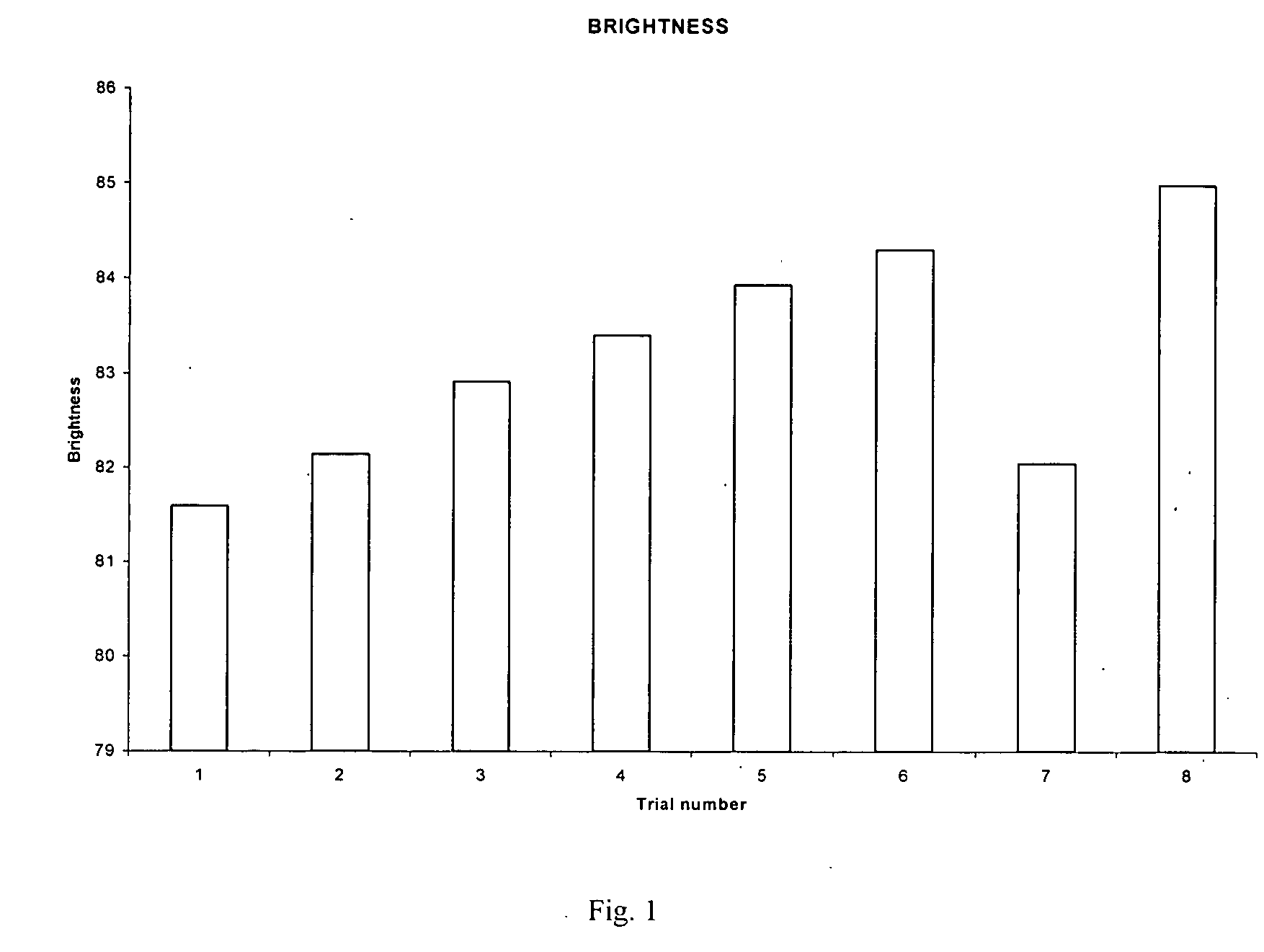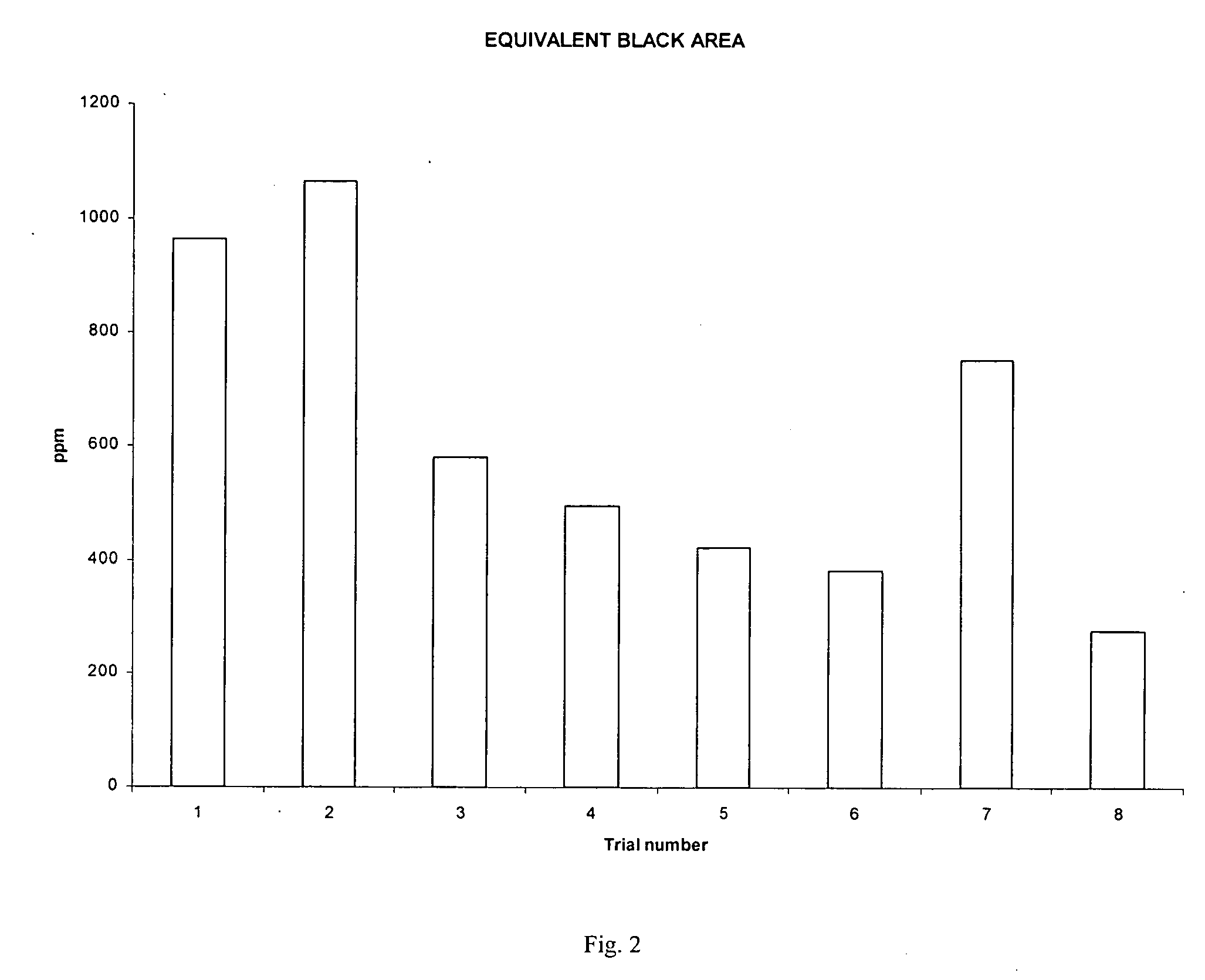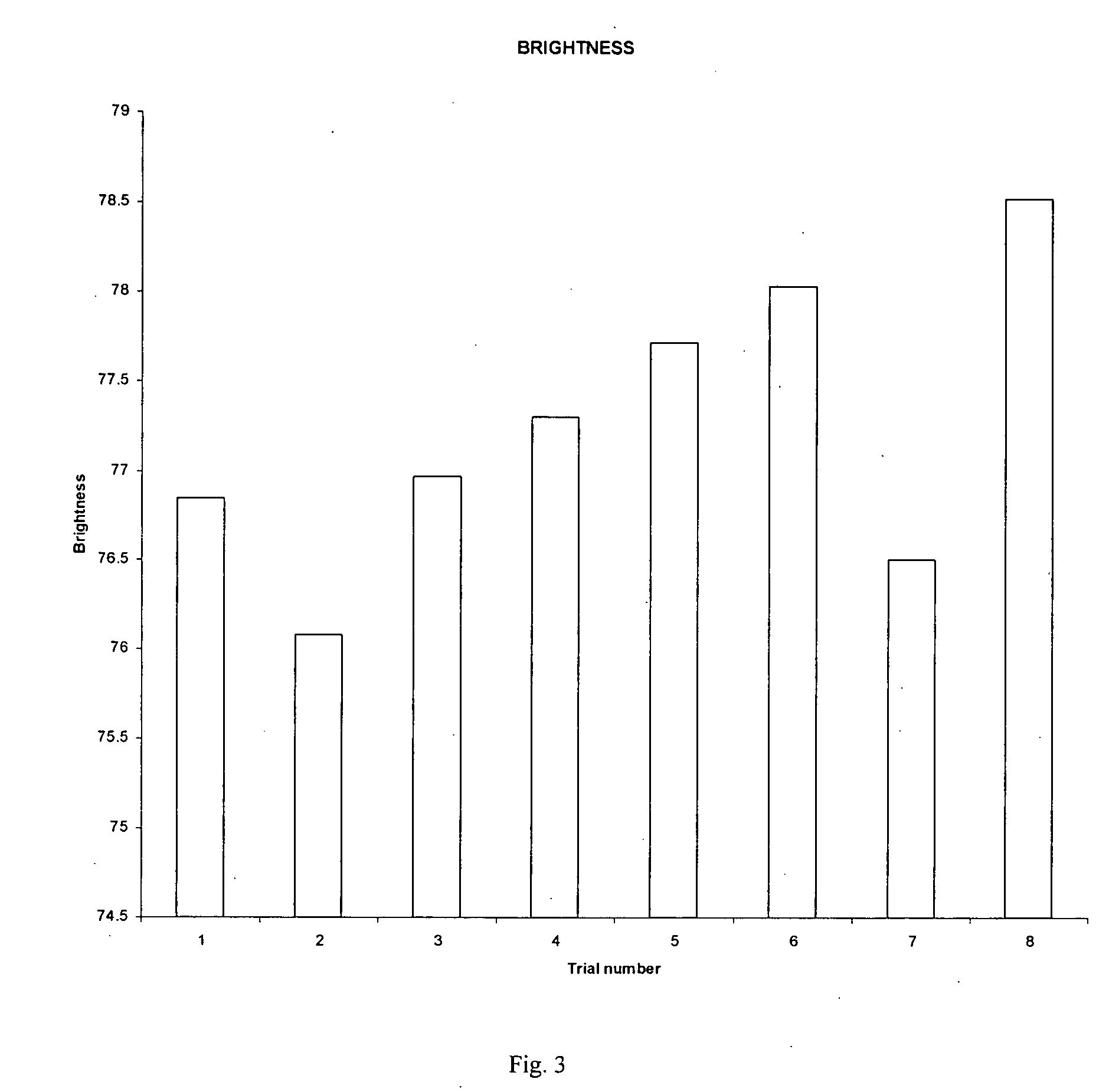Method for enzymatic deinking of waste papers, the waste papers so treated and the treating composition
a technology of enzymatic deinking and waste paper, which is applied in the direction of detergent composition, cellulose treatment using microorganisms/enzymes, paper-making, etc., can solve the problems of loss of fineness in traditional deinking, loss of step, and limited use of step
- Summary
- Abstract
- Description
- Claims
- Application Information
AI Technical Summary
Benefits of technology
Problems solved by technology
Method used
Image
Examples
example 1
[0162] A laboratory series of tests was performed with the following materials and methods:
[0163] Furnish: 175 g a.d. waste paper: 35% mixed office paper (61.25 g a.d.), 35% sorted office paper (61.25 g a.d.), 20% manifold colored ledger (35.00 g a.d.), 10% coated book (17.50 g a.d.).
[0164] Pulper simulation: Hobart N-50 mixer bowl immersed in a constant temperature bath obtained with a 120 volts, 640 watts Watlow heating belt (0-165° C.). All trials (control / standard / with enzymes) were made at 14% pulp consistency (by adding 1075 g tap water to the 175 g a.d. of waste paper) and 42° C. pulp temperature, at 200 rpm for 30 minutes.
[0165] Control (trial 1)—was performed without chemical addition in the pulper.
[0166] Standard (trial 2)—was performed only with 0.73% dry caustic soda (2.54 g of 50% solution) addition in the pulper.
[0167] Enzyme trials were performed with pulper additions of Trizym M27 (—Tri-Tex) a product containing amylase and cellulase activities at the following ...
example 2
[0185] A laboratory series of tests was performed with the following materials and methods:
[0186] Furnish: 175 g a.d. waste paper: 75% mixed office paper (131.25 g a.d.), 20% manifold colored ledger (35.00 g a.d.), 5% old newspaper (8.75 g a.d.).
[0187] Pulper simulation: Hobart N-50 mixer bowl immersed in a constant temperature bath obtained with a 120 volts, 640 watts Watlow heating belt (0-165° C.). All trials (control / standard / with enzymes) were made at 14% pulp consistency (by adding 1075 g tap water to the 175 g a.d. of waste paper) and 42° C. pulp temperature, at 200 rpm for 30 minutes.
[0188] Control (trial 1)—was performed without chemical addition in the pulper.
[0189] Standard (trial 2)—was performed only with 0.73% dry caustic soda (2.54 g of 50% solution) addition in the pulper.
[0190] Enzyme trials were performed with pulper additions of Trizym DE 16 (trade-mark) of Tri-Tex, a product containing amylase activities at the following levels: trial 3—0.01% (0.018 g as is)...
example 3
[0203] A laboratory series of tests was performed with the following materials and methods: Furnish: 175 g a.d. waste paper: 90% mixed office paper (157.50 g a.d.), 10% old newspaper (17.50 g a.d.).
[0204] Pulper simulation: Hobart N-50 mixer bowl immersed in a constant temperature bath obtained with a 120 volts, 640 watts Watlow heating belt (0-165° C.). All trials (control / standard / with enzymes) were made at 14% pulp consistency (by adding 1075 g tap water to the 175 g a.d. of waste paper) and 42° C. pulp temperature, at 200 rpm for 30 minutes.
[0205] Control (trial 1)—was performed without chemical addition in the pulper.
[0206] Standard (trial 2)—was performed only with 0.73% dry caustic soda (2.54 g of 50% solution) addition in the pulper.
[0207] Enzyme trials were performed with pulper additions of Trizym M35—Tri-Tex product contained pectate lyases activity at the following levels:
[0208] trial 3—0.015% (0.027 g as is),
[0209] trial 4—0.030% (0.054 g as is),
[0210] trials 5 a...
PUM
| Property | Measurement | Unit |
|---|---|---|
| temperature | aaaaa | aaaaa |
| temperature | aaaaa | aaaaa |
| temperature | aaaaa | aaaaa |
Abstract
Description
Claims
Application Information
 Login to View More
Login to View More - R&D
- Intellectual Property
- Life Sciences
- Materials
- Tech Scout
- Unparalleled Data Quality
- Higher Quality Content
- 60% Fewer Hallucinations
Browse by: Latest US Patents, China's latest patents, Technical Efficacy Thesaurus, Application Domain, Technology Topic, Popular Technical Reports.
© 2025 PatSnap. All rights reserved.Legal|Privacy policy|Modern Slavery Act Transparency Statement|Sitemap|About US| Contact US: help@patsnap.com



